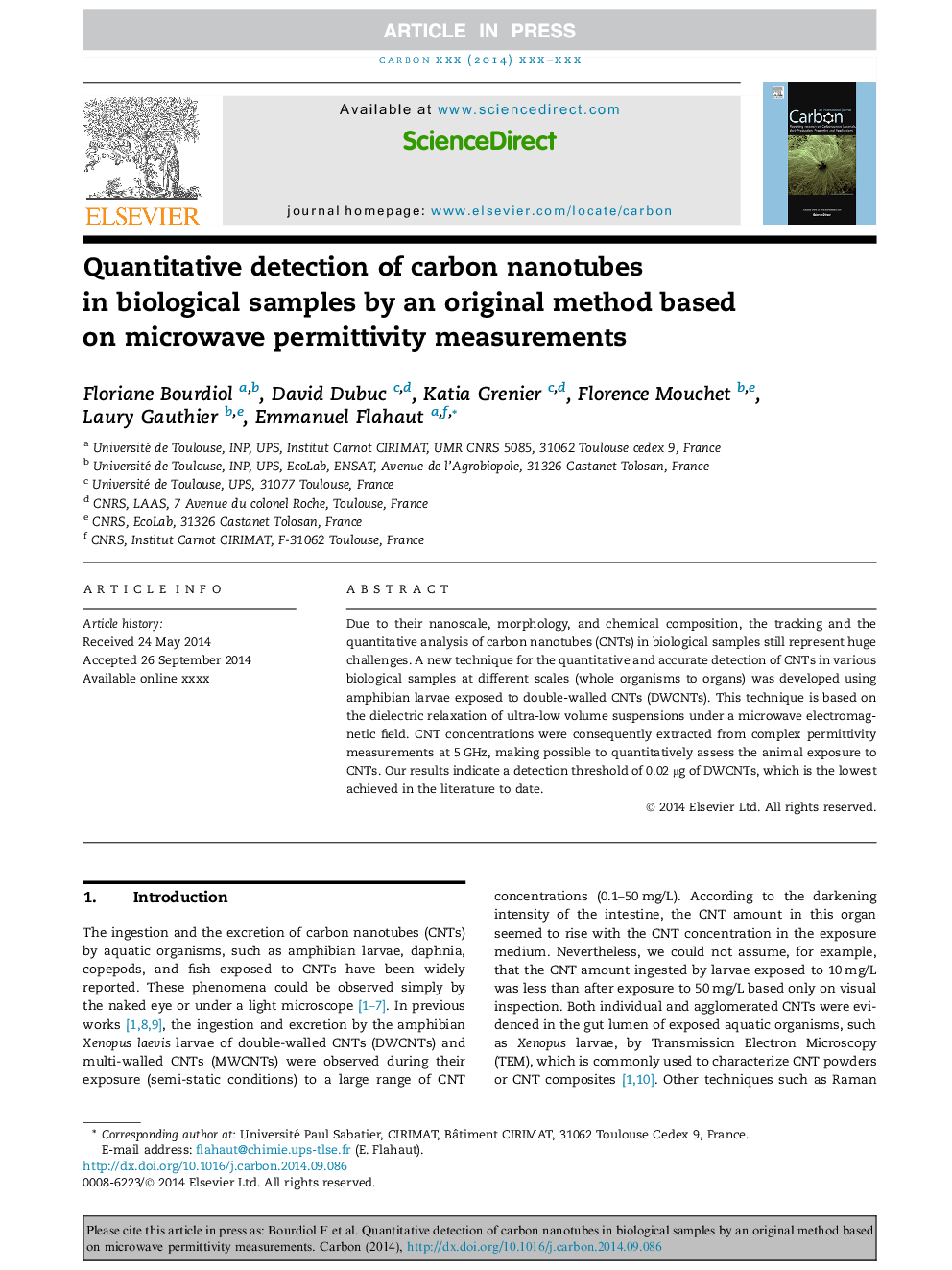| Article ID | Journal | Published Year | Pages | File Type |
|---|---|---|---|---|
| 7852313 | Carbon | 2015 | 11 Pages |
Abstract
Due to their nanoscale, morphology, and chemical composition, the tracking and the quantitative analysis of carbon nanotubes (CNTs) in biological samples still represent huge challenges. A new technique for the quantitative and accurate detection of CNTs in various biological samples at different scales (whole organisms to organs) was developed using amphibian larvae exposed to double-walled CNTs (DWCNTs). This technique is based on the dielectric relaxation of ultra-low volume suspensions under a microwave electromagnetic field. CNT concentrations were consequently extracted from complex permittivity measurements at 5 GHz, making possible to quantitatively assess the animal exposure to CNTs. Our results indicate a detection threshold of 0.02 μg of DWCNTs, which is the lowest achieved in the literature to date.
Related Topics
Physical Sciences and Engineering
Energy
Energy (General)
Authors
Floriane Bourdiol, David Dubuc, Katia Grenier, Florence Mouchet, Laury Gauthier, Emmanuel Flahaut,
